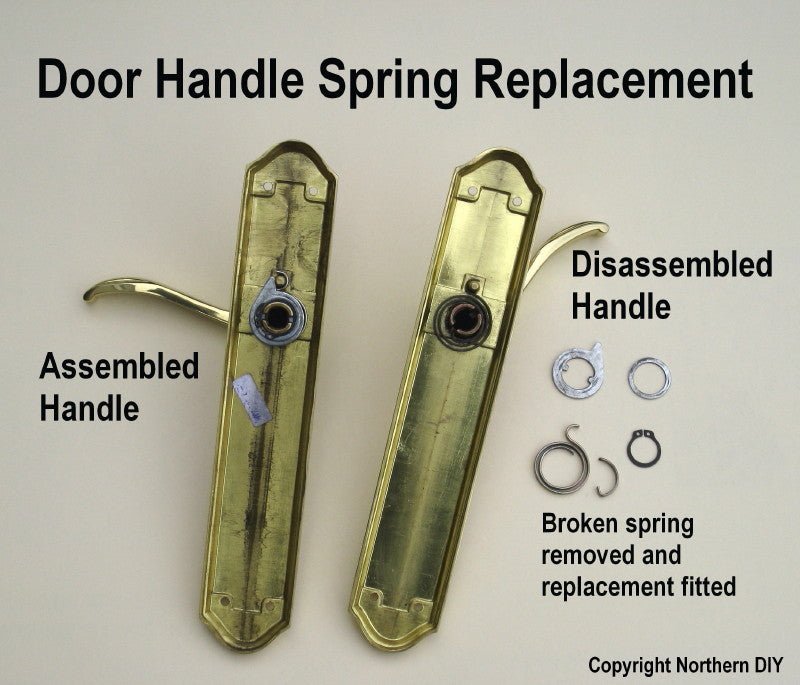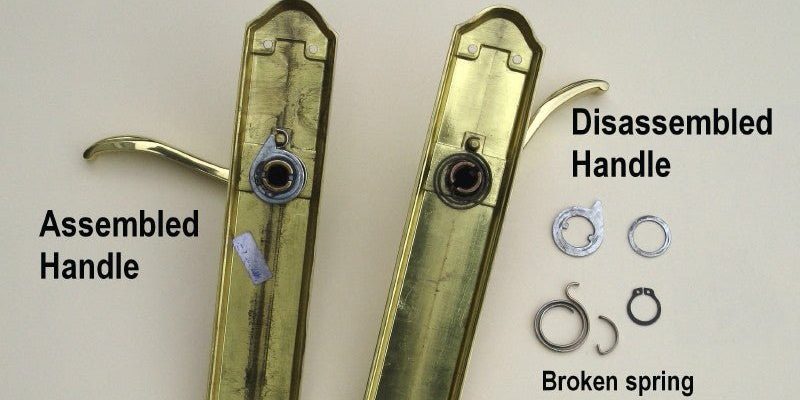
This issue often occurs in various types of door handles, whether you’re dealing with a simple interior door or a complex entryway lock. Understanding how the return spring works can help you tackle the problem confidently. So, let’s roll up our sleeves and dive into diagnosing that pesky door handle issue!
What is a Door Handle’s Internal Return Spring?
Before jumping into diagnosing problems, let’s break down what the internal return spring actually is. At its core, it’s a small but crucial component within the door handle mechanism. When you pull or push a door handle, the spring is responsible for returning the handle to its original position. Picture a seesaw: when you push down on one side (the handle), the other side needs to come back up (the spring). If that spring is damaged or out of place, the whole system can falter.
You might be wondering why this matters. A properly functioning return spring ensures that your door can close smoothly and securely each time you use it. If it fails, you could face issues like the handle getting stuck or even a door that won’t latch properly. Nobody wants to be stuck with a door that feels more like a puzzle than a passageway!
Identifying Symptoms of a Malfunctioning Return Spring
Now that we understand what a return spring does, let’s discuss how to spot when it’s not performing well. Here are some common symptoms that might indicate a problem:
- Sticking Handle: If your door handle feels like it’s dragging or sticking when you try to turn it, the spring may be the culprit.
- No Return Action: A handle that stays down after you pull it likely has a broken or misaligned spring.
- Excessive Play: When you notice the handle has a lot of movement without resistance, it’s a sign the spring isn’t doing its job.
Each of these symptoms can create headaches in your daily routine. Imagine trying to leave your house quickly, only to find the door handle won’t cooperate! Pay attention to these signals, as they can save you time and frustration later.
Tools You’ll Need for Diagnosis
Getting started with diagnosing the issue requires a few basic tools. You don’t need a full workshop to conduct this investigation. Here’s a handy list to guide you:
- Screwdriver: This is essential for removing the handle and accessing the spring.
- Flashlight: Good lighting helps you see all the tiny components more clearly.
- Pliers: These can assist in maneuvering or replacing parts if necessary.
- Replacement Spring: If the spring turns out to be broken, having a new one on hand can simplify your repairs.
Having these tools ready will streamline your diagnosis and repair process. Honestly, it’s much easier than it sounds, and you might find it quite satisfying to fix the problem yourself!
Steps to Diagnose the Problem
Diagnosing the issue with your door handle’s internal return spring is straightforward. Here’s how to do it step-by-step:
1. Inspect the Handle:
– Begin by closely examining the door handle itself. Look for any visible damage or misalignments. If the handle feels loose, this could point to a spring issue.
2. Remove the Handle:
– Use your screwdriver to remove the handle. This usually involves unscrewing a couple of screws. Gently pull the handle off and set it aside.
3. Examine the Return Spring:
– Once the handle is removed, look inside the mechanism for the return spring. Check for signs of wear or any breaks. If the spring looks okay, it could be that the components around it are misaligned.
4. Test the Mechanism:
– With the handle off, try moving the mechanism with your hand. If it feels stiff or doesn’t return to its position, the spring is likely the problem.
Taking these steps should clarify the issue. If everything looks functional, you might be dealing with a deeper mechanical issue.
Fixing the Internal Return Spring
If you’ve determined that the return spring is indeed the issue, you’ll need to fix it. Here’s how you can approach it:
1. Replace the Spring:
– If the spring is broken, carefully remove it using pliers. Then, insert the new spring. Make sure it’s aligned correctly within the handle mechanism.
2. Reattach the Handle:
– Once the new spring is in place, reattach the door handle. Ensure all screws are tightened properly to prevent any future issues.
3. Test the Handle:
– After everything is back together, test the handle. It should move freely and return to its original position without any sticking.
If you’ve replaced the spring and the problem persists, there may be a larger issue at play. In such cases, consulting a professional might be the best course of action.
Preventive Measures to Avoid Future Issues
Once you’ve tackled the problem, you’ll want to ensure it doesn’t happen again anytime soon. Here are some preventive measures you can take:
- Regular Maintenance: Check your door handle and springs every few months. Look for signs of wear and catch issues early before they escalate.
- Avoid Excessive Force: Be gentle when using the handle. Slamming doors can cause unnecessary strain on the internal components.
- Lubricate the Mechanism: A little lubrication can go a long way. Apply a drop of oil to the moving parts to keep everything functioning smoothly.
Implementing these simple strategies can help keep your door handle in good shape. It’s all about proactive care!
When to Call a Professional
While diagnosing and fixing a door handle’s return spring can be a DIY project, there are times when it makes sense to call in a pro. If you’ve replaced the spring and the handle still doesn’t work, or if you’re uncomfortable with how to proceed, don’t hesitate to contact a locksmith or handyman. They can diagnose more complex problems you might not be equipped to handle.
Diagnosing a problem with a door handle’s internal return spring doesn’t have to be daunting. With a little patience and the right tools, you can identify issues and make repairs confidently. Remember, a smooth-functioning door handle not only makes your life easier but can also contribute to the security and functionality of your home. So, the next time you notice that door handle behaving strangely, you’ll be well-equipped to get it back in shape!
